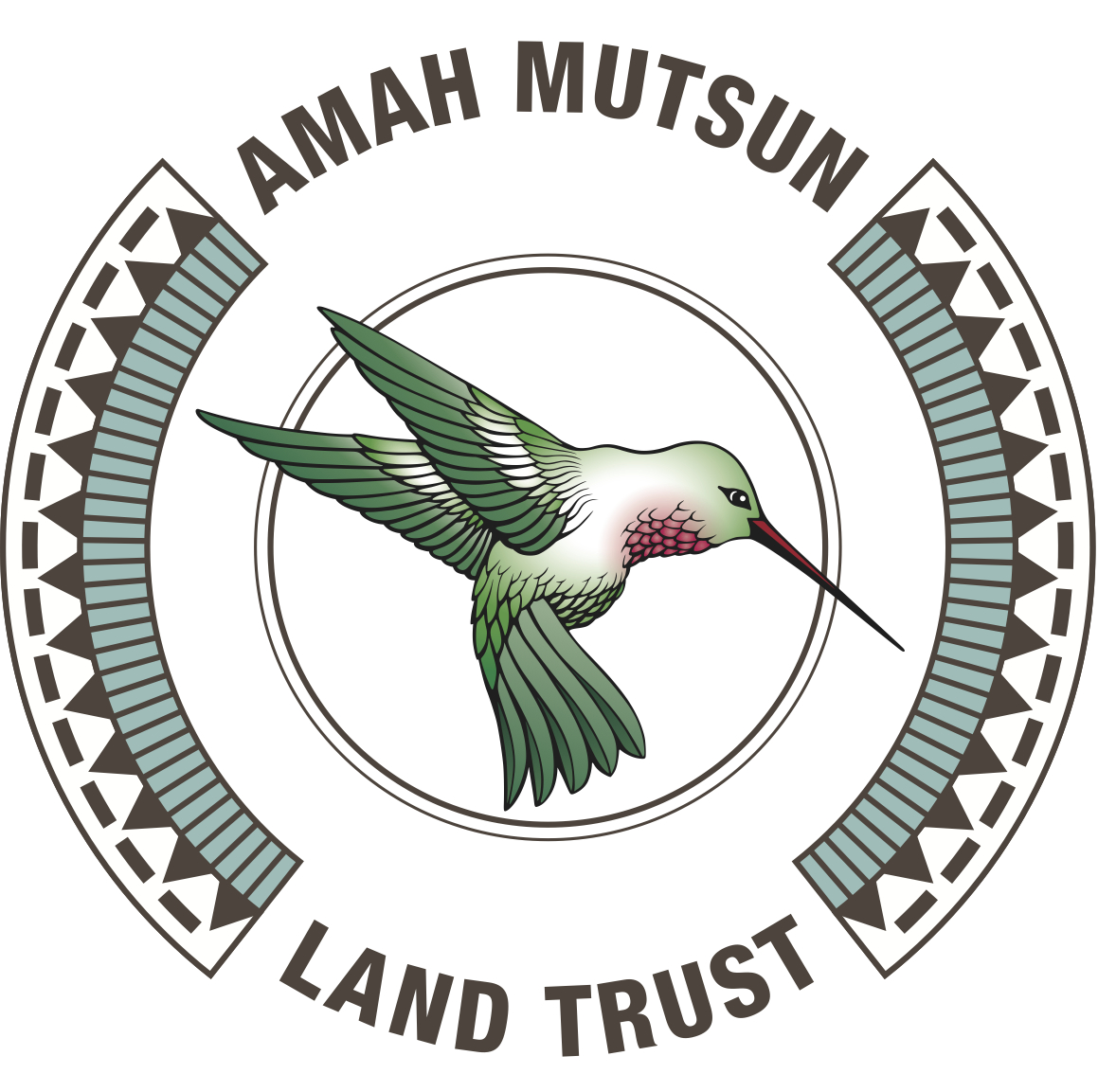Winter 2024 Newsletter
To return to the newsletter, click here.
Restoring Native Coastal Prairie at Quiroste Valley Cultural Preserve
By Aylara Odekova, AMLT Native Plant Program Manager
One of the biggest highlights this year was the final site visit from one of the Native Plant Program funders, the California Natural Resources Agency (CNRA), to close out Amah Mutsun Land Trust’s Collaborative Restoration of an Indigenous Cultural Landscape at Quiroste Valley Cultural Preserve grant. This project was funded through Proposition 68 with the intention of protecting, restoring, and enhancing California’s cultural, community, and natural resources.
Amah Mutsun Land Trust (AMLT) began work on this project in 2020 with the goal of restoring threatened native coastal prairie vegetation communities, reducing fire hazards, and educating the public on Indigenous stewardship practices. This project followed over a decade of collaborative historical ecological and archaeological research that was conducted at Quiroste Cultural Preserve (QVCP) in Año Nuevo by the Amah Mutsun Tribal Band, AMLT, California State Parks, and researchers from UC Berkeley. The integrative historical ecological study of native people on the landscape examined the types of foods the native people ate and how they stewarded the land. This knowledge served as an impetus for tending the remaining grassland community and protecting it from encroachment of invasive species as well as vegetation succession.
Over the course of the last four years, as part of this grant, AMLT produced and installed 139,000 native plant plugs in beds at Cascade Ranch for seed production. We grew over 35 different species of native forbs and wildflowers in 50 native plant beds. Each season, we harvested and processed native plant seeds and prepared the land for sowing. We did so by removing shrubs and invasive species. AMLT treated over 10 acres of selected invasive species and removed encroaching shrubs on over five acres of land.
AMLT staff and volunteers preparing beds at Cascade Ranch.
AMLT volunteers harvesting seeds from a bed of tidy tips (Layia platyglossa).
We established and tended 280 native plant propagation plots at QVCP, sowing native plant seeds on over five acres of land. Native plant plots were carefully chosen and placed on top of existing burn piles after their consumption. In early June, our staff monitored the planting plots we installed. We inspected and evaluated 30 different plots and all of them were doing exceptionally well with at least two to three native plant species present in each of the plots.
AMLT staff and volunteers processing native plant seeds in the AMLT greenhouse.
AMLT staff and volunteers tending plots at Quiroste Valley Cultural Preserve.
Over the course of the four years, AMLT faced and navigated multiple challenges, including COVID19, access to water, and severe weather conditions that destroyed the greenhouse. AMLT staff worked diligently to overcome all of the difficulties and adapted to the challenges. At the time, AMLT’s Native Program Team included the Native Stewardship Corps, consisting entirely of tribal members. Moreover, AMLT created a volunteer team that is now comprised of 35 long-term volunteers, each of whom dedicate at least 8 hours of volunteer time per month. Since its inception in 2021, the volunteer team has contributed over 7,000 hours of time towards the Native Plant Program.
AMLT volunteers gathering cuttings on the coast by Cascade Ranch.
The CNRA grant laid the foundation for our continued work with native plants and forged long-term multi-stakeholder partnerships with public entities, benefiting the public through educational tours. AMLT hosted numerous tours of the project site to members of the public, including students from UCSC, UC Berkeley, and SFSU.
AMLT volunteers and staff will continue to remove germinating and resprouting invasive species in the treated area as time and resources allow. We will continue to harvest and process native plant seeds and monitor the planting plots we established. Our commitment towards the plants we sowed and the land of the Quiroste is in perpetuity.
Ultimately, we recognize that the work to restore the native grassland community is impossible to sustain over the long run without fire. As we work with the Central Coast Prescribed Burn Association and California State Parks to finalize the Quiroste burn plan, we rest in knowing that fire will help us restore the grasslands over time.
AMLT is grateful to all of our supporters for making the work at QVCP possible, especially the California Natural Resources Agency.





